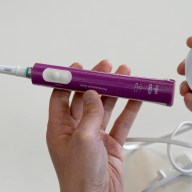Lightweight materials are essential to the auto industry: they’re stronger than steel, and help improve a car’s performance and efficiency.
But they also need to be proven, and that’s the task of the Automobili Lamborghini Advanced Composite Structures Laboratory at the University of Washington in Seattle.
Here, lab director professor Paolo Feraboli oversees the process by which composites are destroyed, so companies know how they will perform in a crash. The laboratory is primarily dedicated to aeronautics; Lamborghini came on board to share the high quality of testing the lab performs.
“We focus on the catastrophic failure of composites, with carbon fibre in particular,” Feraboli says.
“We have a variety of ways where we can induce damage in structures. We do not yet have a full understanding of how these materials fail, and this is why we do so much testing.”
Composites are often the only choice for large structures, such as the one-piece barrel fuselage on the new Boeing 787.
“In aluminum, that would require ten or twelve different segments, because you simply can’t make that in one piece in aluminum,” Feraboli says.
“We have the same situation at Lamborghini. For example, the rear engine bonnet for the Spyder would require eleven pieces of aluminum welded together, and it would have a hard time sustaining its own weight when lifted. In carbon fibre, we have two pieces and they’re much lighter.”
The lab creates “models” — mathematical calculations used to predict the behaviour of the material. The lab first develops the model, and then performs the actual crash test to validate the theory. The automaker uses these models at the earliest stages of the design process.
“By the time you have the car built and ready to crash-test, you’re already at the end of the project,” Feraboli says. “If the car tests go wrong, you’ll have to spend millions of dollars to change it. Without the models, you’d have to build (a car), crash it, and then change it. Lamborghini doesn’t want to go that way; it’s expensive and doesn’t guarantee the right level of safety.”
The laboratory is also working on the composites themselves. Conventional carbon fibre must be cured in a special pressurized oven.
A new version doesn’t require pressure, and can be cured less expensively in a regular oven.
“We’re working on carbon fibre that can improve the manufacturing rate and reduce the cost,” Feraboli says. “The goal is to use more composites and be able to use it in a broader range of vehicles.”
















